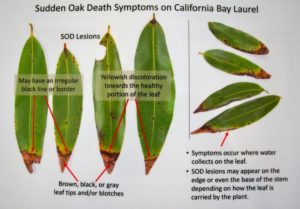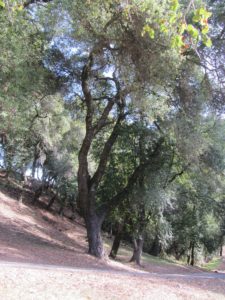The OSMA was established to manage and maintain the over 200 acres of wildlands and irrigated parcels of open space within the Fountaingrove II planned development. The 591 lot owners pay $58 per month to fund the OSMA. The OSMA, with a five person volunteer Board, is obligated to maintain firebreaks, manage the wildlands in an environmentally responsible manner, protect and re-establish endangered native plants and provide upkeep for the irrigated landscapes.
The OSMA does not enforce the community’s three sets of Covenants, Conditions and Restrictions (CC&Rs). The CC&Rs are enforced through different entities known as the Architectural Review Committees (ARCs).
NO. trees or other plants may be cut in the open space for view. Further, no plants may be trimmed or altered in any way without the explicit consent of the Fountaingrove II OSMA Board. There are stiff fines associated with any destructive behavior that takes place in our wildlands or irrigated open space.
The OSMA deals only with the wild open space property and irrigated open space. Neighborhood nuisances are covered under the CC&Rs, which are under the jurisdiction of the three area Architectural Review Committees (East, Summit, West). Currently, the East is the only area with a functioning ARC. The Summit and West areas of Fountaingrove II are strongly encouraged to organize their ARCs.
The OSMA does not enforce the CC&Rs. Please do not address your complaints to the OSMA. If you live in the Fountaingrove II East neighborhoods, you may contact the Architectural Review Committee for that area. That information can be found here on this website.
NO. Fireworks are illegal within all areas of the City of Santa Rosa 365 days of the year. Fountaingrove is considered a VERY HIGH FIRE SEVERITY ZONE, so even thinking about using fireworks in our area is both crazy and illegal.
WRONG. All of the open space (whether it’s irrigated and landscaped or naturally wild) is our scenic treasure. Traversing over it to your own yard to deliver materials, for example, would be like traipsing through your next door neighbor’s backyard for your convenience. It is the OSMA’s responsibility to protect the land from damage. It is entirely possible that hidden water lines or endangered plants are present. Tree roots might become damaged, erosion problems might be created, or any number of other problems may occur.
There have been instances where the OSMA has granted access through the open space to homeowners, but they must present their request to the Board for approval, sign waivers and submit a deposit. Homeowners caught trespassing without approval through the open space will be fined.
The OSMA highly encourages homeowners to explore the open space on foot. Take a hike with a friend and you’ll find what glorious beauty is just beyond our front doors.
Sudden Oak Death (SOD) is a tree disease that is killing some of the oaks in Sonoma County. Unfortunately, we have it in Fountaingrove II open space. The disease is caused by the plant pathogen Phytophthora ramorum, a water-loving fungus-like organism that produces plentiful spores in moist, humid conditions which may then be spread through wind-driven rain, water, plant material, or human activity. The spores spread from neighboring plants, such as California bay laurel trees, and enter the oak tree’s vascular system through the bark or through pruning wounds. It kills the tree, although the tree may appear alive and healthy for up to 2 years, until suddenly, it turns brown and dies. It has no known cure.
The following plants are known hosts for Sudden Oak Death: bay laurel, big leaf maple, madrone, manzanita, coffeeberry, camellia, rhododendron, coast and canyon live oaks, redwood, Douglas-fir, black oak, red oak, California buckeye, toyon, lilac, viburnum and many more. Here is a graphic on what to look for in infected Bay trees:

There are preventive measures that may protect trees. The Publication “Protecting Trees from Sudden Oak Death Before Infection” provides helpful information regarding those treatments, which can include the use of systemic fungicide phosphonate.
The OSMA is trying to keep abreast of the latest information available. If you’d like to learn more about SOD, visit: www.suddenoakdeath.org for more information and photos of infected plants.
Below is an oak with SOD located behind Parker Hill Drive.

Yes. It has just recently come to our attention at OSMA that shredded redwood or gorilla hair tends to catch fire readily and spread the flames quickly. Wood chips are much preferred as mulching material.